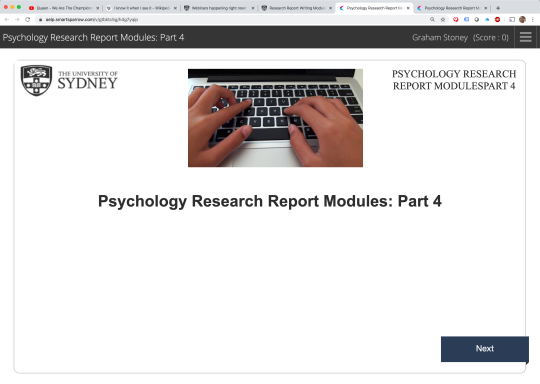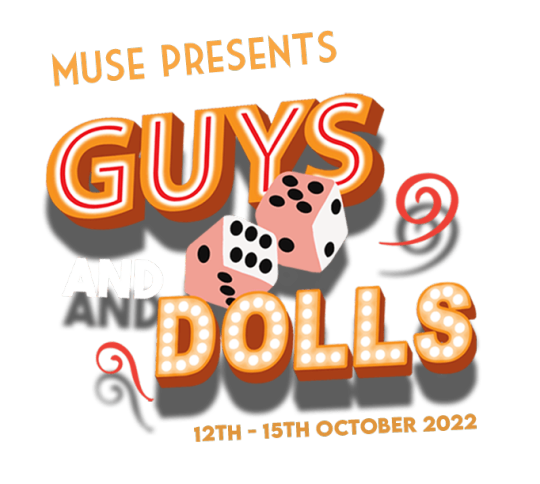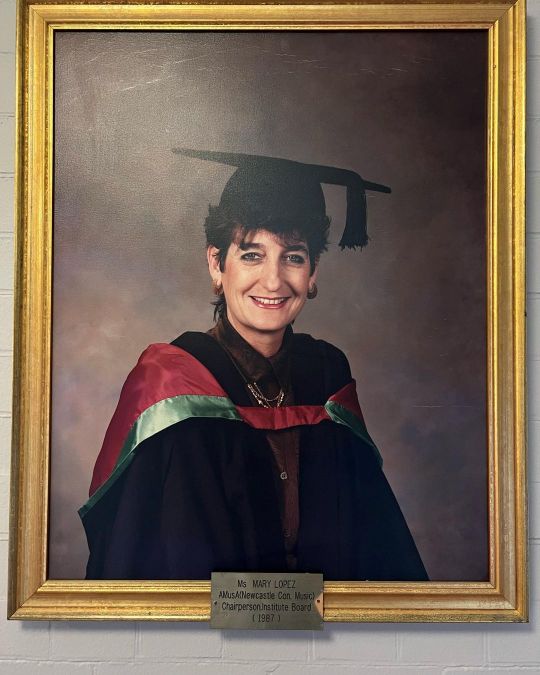Don't wanna be here? Send us removal request.
Text
Please Sponsor Me In Ducktober For Mental Health
This October I will be taking the Ducktober cold water challenge to improve my own mental health whilst fundraising to help others improve theirs. All funds raised will go to Waves of Wellness (WOW) Foundation to support their mental health surf therapy programs. I did their Surf Therapy program in Bondi last year to help me with the grief over the death of my parents, and it’s really excellent…

View On WordPress
0 notes
Text
Please Sponsor Me In Ducktober For Mental Health
New Post has been published on https://grahamstoney.com/mental-health/please-sponsor-me-in-ducktober-for-mental-health
Please Sponsor Me In Ducktober For Mental Health
This October I will be taking the Ducktober cold water challenge to improve my own mental health whilst fundraising to help others improve theirs. All funds raised will go to Waves of Wellness (WOW) Foundation to support their mental health surf therapy programs. I did their Surf Therapy program in Bondi last year to help me with the grief over the death of my parents, and it’s really excellent so I want to support it.
To sponsor me with a donation, please click this super-cute picture of my inner child, taken when I was 6 years old:
And if you want to participate, especially if you’re also a musician, please join my Team Rock Stars.
0 notes
Photo

Seeing @timminchin tonight at @sydneyoperahouse. I seem to be quite close to the stage. #excited😁 (at Sydney Opera House) https://www.instagram.com/p/Ck2lH_Yy-PN/?igshid=NGJjMDIxMWI=
0 notes
Text
PSYC1001/PSYC1002: Introduction To Psychology - Final Exam Sample Questions
PSYC1001/PSYC1002: Introduction To Psychology – Final Exam Sample Questions
When I did PSYC1001 & PSYC1002 at The University of Sydney, the lecturers declined to provide sample final exam questions from past years. So, to help my fellow future students, I created a few of my own based on my experience of the subject: (more…)

View On WordPress
#Affective Neuroscience#Cognitive Behaviourism#emotions#passive aggression#PSYC1001#PSYC1002#PSYC101#PSYC102#The University of Sydney
0 notes
Text
PSYC1001/PSYC1002: Introduction To Psychology - Final Exam Sample Questions
New Post has been published on https://grahamstoney.com/psychology/psyc1001-psyc1002-introduction-to-psychology-final-exam-sample-questions
PSYC1001/PSYC1002: Introduction To Psychology - Final Exam Sample Questions
When I did PSYC1001 & PSYC1002 at The University of Sydney, the lecturers declined to provide sample final exam questions from past years. So, to help my fellow future students, I created a few of my own based on my experience of the subject:
Question 1, Developmental Psychology: Although his 2016 election was very close, when he was president Donald Trump published this tweet, commenting that “there’s a lot of red”.
Source: Twitter
According to Piaget, which stage of cognitive development had President Trump reached?
Sensorimotor
Preoperational
Concrete operational
Formal operational
Question 2, Evolutionary Psychology: A student in an online lecture makes an inappropriate, tactless anonymous comment about the female lecturer’s appearance, which leaves her feeling upset. The student is reprimanded for their inappropriate behaviour, and for their stupidity in not realising that anonymous comments in Echo360 are only anonymous to other students.
According to Darwin’s theory of evolution by natural selection, what primate species did the student most likely belong to:
Neanderthal
Homo erectus
Chimpanzee
Bonobo
Gorilla
Question 3, Learning and Motivation: Your Learning and Motivation lecturer recommends using negative punishment to manage a child having a tantrum, saying punishment will reduce the likelihood of future tantrums whereas giving in to what the child wants will only reward and reinforce undesirable behaviour.
How should you respond?
Use instrumental conditioning on him when he’s upset, and see how he likes it
Gently refer him to Jennifer Kolari’s work on Connected Parenting
Learn about empathy and emotional co-regulation elsewhere
Report him to the Department of Community Services
Question 4, Psychoanalytic Theory: Your Science and Statistics lecturer makes derisive comments about Apple, suggesting that the company and its customers are a cult. As a MacBook user, you notice that the laptop in the image for the online learning modules for the PSYC1001 Research Report major assignment is a MacBook.
Source: SmartSparrow.com
According to Freud’s psychoanalytic theory, the lecturer is probably experiencing:
Jealousy
Projection
Transference
Reaction Formation
Cognitive dissonance
Unconscious sexual desire for his mother
Inner conflict between his Id and his Ego
Question 5, Personality: Your lecturer suggests that a good way to avoid unproductive arguments with closed minded people is to ask: “What kind of evidence would get you to change your mind?” He adds that a good scientist should always be able to describe what kind of evidence would overturn their theory, whereas those who make silly claims will simply look stunned or confused.
Recalling his recent statement about Apple and its customers, you take his advice and ask him in the next PSYC1001 webinar: “What kind of evidence would get you to change your mind about Apple?”
Based on the 5-factor model of Personality, how do you predict he will react?
He’ll be angry
He won’t get the joke
He’ll look stunned and confused.
He’ll recognise your condescending smart ass in your research report and mark it harshly
You don’t need the 5-factor model to answer this question
Question 6, History of Psychology: A naïve History of Psychology student learns that: Freud believed unconscious repressed childhood emotions were the basis of adult neuroses. The radical behaviourists dismissed Freud’s ideas as unscientific and used animal experiments to conclude that all human behaviour could be studied, influenced, and predicted purely by instrumental conditioning. Recognising the limitations of this model, the cognitive behaviourists realised that thoughts also played a role in human behaviour, but neglected emotions because they were hard to measure experimentally.
While studying neuroscience, the student notices that emotions arise in a more primitive part of the brain than cognition. While reading more widely, they discover behavioural models from affective neuroscience in which emotion, not cognition, drives human behaviour. When they question their lecturers about whether cognitive behaviourism is consistent with how the human brain works, they get a mixed response and worry they will lose marks for being a troublemaker.
What processes are involved in the student learning to accept cognitive behaviourism as the dominant paradigm in modern Psychology?
Instrumental conditioning
Social learning
Social facilitation
Operant conditioning
Peer pressure
Ego integrity
Classical conditioning
Cognitive dissonance
Denial
All the above
Question 7, Science & Statistics: In a lecture critical of pseudo-science, your Science & Statistics lecturer uses a graphic titled Human Energy Systems as an example of unscientific vitalistic thinking. You notice that the author of the graphic is a female friend you met online, whose Facebook page has over 4 million followers.
Source: yang-shen.com
What should you do?
Play the angry song you wrote about how she friend-zoned you
Accept that he has a point; she’s kinda weird and her beliefs are wacky
Wistfully wonder what could have been
Pledge your allegiance to science and join his campaign to eliminate all stupidity from humanity
Assume he’s jealous because she has more followers than he does
Question 8, Abnormal Psychology: Your Abnormal Psychology lecturer recommends the 2019 BBC Documentary Nadiya: Anxiety and Me as an example of the successful treatment of panic disorder with cognitive behavioural therapy.
Source: BBC
You watch the documentary and are appalled by the cold, emotionally invalidating manner with which Nadiya is treated in therapy, and the general lack of empathy shown to another human being in the midst of mental distress. Also, you notice that by the end of the documentary her treatment using CBT is only partially successful and Nadiya concludes that she will have to learn to live with her panic attacks.
What should you do?
Spend 8 hours writing a lengthy rebuttal critiquing the therapy Nadiya was offered instead of working on your upcoming PSYC1001 research report
Make a “reaction” video where you react to Nadiya’s experience while watching the documentary, but do it after the final exam is completed
Reach out to Nadiya online offering emotional support and suggesting an emotionally focussed therapy would work better for her than CBT
Get some trauma-informed emotionally focussed therapy and keep chipping away at your own social anxiety
All of the above
Question 9, Forensic Psychology: You are disappointed with the mark you get for your PSYC1002 Research Report assignment. While you believe you have met all the requirements and engaged in the kind of inventive, critical thinking exemplifying in the graduate qualities the university seeks to develop in students, your tutor deducts marks for using a table to summarise the flaws in previous research and putting your hypothesis in italics.
When you point out to him that tables and italics are recommended by APA 7th Style as required in the assignment description, he responds that it’s the grandiose way you’ve used them that he didn’t like. You secretly suspect that pointing out that a lot of Psychology research isn’t grounded in neuroscience and fails to replicate has pissed him off, and that’s affected your mark.
What should you do?
Request a remark
Lodge an appeal to the Student Appeals Body
Stop being such a smart-arse and learn to write a proper research report
Wait until your PhD to critique Psychology research methods
Focus your argument better so it fits the word count limit next time
Investigate his traumatic family background to find out why he’s so triggered by grandiosity
Question 10, Emotional Intelligence: Your first-year Psychology lecturers all neglect to mention the universal basic human emotions underlying all human behaviour.
What are they?
Fear
Anger
Joy
Sadness
Disgust
Surprise
Contempt (maybe)
Guilt
Shame
Question 11, Cognitive Processes: Despite nailing every other section, you score poorly on the Cognitive Processes section of the PSYC1002 final exam and miss out on a High Distinction as a result. When you query the lecturer responsible on whether your mark is correct, he responds saying that marking that section was “one facepalm after another as seemingly intelligent students gave the wrong answer again and again.”
What cognitive process could account for students of his most excellent teaching consistently giving incorrect answers to his finely handcrafted questions?
Reaction Formation
A Self-defeating Schema
Boredom
Unconditional Negative Regard
Repressed Anger
Childhood Trauma
Hair Splitting
Denial
Question 12, Neuroscience: After 7 straight 12-hour days studying your Psychology notes and reviewing lecture recordings and learning outcomes, you notice a dramatic drop in your motivation 2 days prior to your PSYC1001 final exam worth 65% of your mark.
What neurotransmitter are you likely to be lacking?
Dopamine
Serotonin
Acetylcholine
Norepinephrine
GABA
Givashitanine
Sleep
All the above
Question 13, Cognitive Processes: Your Science and Statistics lecturer keeps banging on about Nobel Prize-winner Linus Pauling’s advocacy of Vitamin C being an example of the argument from authority fallacy. You do some research of your own and find a literature review suggesting that regular supplementation with Vitamin C reduces the duration of the common cold by almost a day.
When you query him about it publicly on Piazza, he stands his ground and claims that the research you cite supports his position that Vitamin C is a useless placebo. You disagree, and when you find research showing that taking placebos resulted in colds that were shorter and less severe anyway, you decide to keep taking it.
Which process or theory best explains the lecturer’s reaction to having his beliefs publicly challenged?
Cognitive Bias
Cognitive Dissonance
Reaction Formation
Piaget’s theory of developmental Accommodation vs Assimilation
Social Facilitation
The Argument from Authority fallacy
Common sense: You insulted him publicly; what the hell were you expecting?
Question 14, Emotional Intelligence: Your PSYC1001 lecturer highly recommends OLET1668: Developing Your Emotional Intelligence to his students. You take his advice and do the unit online during the August intensive. While you enjoy it, you feel disappointed with the large number of typos it contains.
According to Gross’s Process Model of Emotional Regulation, how could you best down-regulate your disappointment?
Situation Selection – Avoidance: Withdraw from the unit before census date so you don’t get charged for it
Situation Modification – Instrumental social support: Send the OLET1668 coordinator a brief, polite email pointing out the most egregious examples that bother you, and hope the Faculty of Science include basic affective neuroscience in PSYC1001 in future
Attention Deployment – Distraction: Read about the new COVID delta strain outbreak on the ABC News website, and feel anxious about that instead
Cognitive Change – Reappraisal: Remind yourself that everyone is doing their best under difficult circumstances, and this is only Psychology after all
Response Modulation – Social sharing: Share about it in your satirical mock PSYC1001 final exam questions
Question 15, Attachment Theory: Studying Psychology at Sydney Uni really makes you angry because the lecturers keep emphasising cognitive behaviourism and downplaying the vital role of emotions in all human behaviour. This unconsciously reminds you of your emotionally dismissive mother, with whom you never felt safe to be angry. When you eventually realise that your feelings about the lecturers are really just displaced infantile rage toward your mother, even reading Bowlby isn’t enough to soothe your deep-seated resentment and inner terror.
What should you do?
Confront every lecturer with questions about where emotions fit in
Send them a copy of Affective Neuroscience by Jaak Panksepp
Read The Healing Power of Emotion by Diana Fosha et al during your summer holidays
Secretly ruminate about how psychologists have disappointed you, including your ex-girlfriend
Drop your Psychological Science major and apply for a Bachelor of Music because you think it will be more fun
Accept that lecturers for subjects with over a thousand students are not in a position to offer emotional support
Contact CAPS and get some counselling, because you need help dude
Channel your anger passive-aggressively into comedy by writing a list of faux PSYC1001/PSYC1002 Final Exam sample questions.
#Affective Neuroscience#Cognitive Behaviourism#emotions#passive aggression#PSYC1001#PSYC1002#PSYC101#PSYC102#The University of Sydney#Psychology
0 notes
Text
MUSE President Defends Heteronormative Gender Stereotypes In Upcoming Production of Guys & Dolls, Saying “It’s Hilarious”
MUSE President Defends Heteronormative Gender Stereotypes In Upcoming Production of Guys & Dolls, Saying “It’s Hilarious”
Sydney University Musical Theatre Ensemble (MUSE) president Daniel Baykitch has responded to criticism that the society’s upcoming 2022 production of Guys and Dolls employs heteronormative gender stereotypes by stating, “Yeah. But it’s hilarious.” (more…)

View On WordPress
0 notes
Text
MUSE President Defends Heteronormative Gender Stereotypes In Upcoming Production of Guys & Dolls, Saying “It’s Hilarious”
New Post has been published on https://grahamstoney.com/shows/muse-president-defends-heteronormative-gender-stereotypes-in-upcoming-production-of-guys-dolls-saying-its-hilarious
MUSE President Defends Heteronormative Gender Stereotypes In Upcoming Production of Guys & Dolls, Saying “It’s Hilarious”

Sydney University Musical Theatre Ensemble (MUSE) president Daniel Baykitch has responded to criticism that the society’s upcoming 2022 production of Guys and Dolls employs heteronormative gender stereotypes by stating, “Yeah. But it’s hilarious.”
The production team has brushed off criticism for casting leading roles Nathan Detroit (Oscar Seifried), Miss Adelaide (Claudia Redolfi), Sky Masterson (Tavis Bancroft), and Miss Sarah Brown (Belinda Thomas) based purely on talent and ability demonstrated during the audition process, without any apparent concern for increasing non-binary gender diversity.
Other major characters such as Nicely-nicely Johnson (Louis Vinciguerra), Benny Southstreet (Jesse Donaldson-Jarrett), Rusty Charlie (Kieren Gregory) and Big Jule (Graham Stoney) also appear to have been awarded based on merit without any attempt to address historical injustices that occurred long before any of them were born.
“It’s a musical comedy classic,” said Producer Gayathri Kathir, adding that they were just trying to put on a fun show for everyone and didn’t think gender would be such an issue for a comedy about how the two traditional genders traditionally related in the 1950s.
Director William Rogut pointed out that several cast members who did not identify as male were nevertheless cast in roles traditionally played by men, including Harry The Horse (Georgia Togher) and General Cartwright (Maggie Hartsuyker). “They’re doing a brilliant job of it too,” he said, while adding that casting Avide Avernathie (Andrew Smallbone) was obviously anti-ageist, as if this were somehow sufficient to satisfy the modern woke agenda.
Assistant director Daniel Sirmai highlighted the integrity of the casting process saying, “This is the best cast MUSE has assembled for any production of Guys and Dolls all year!”
When it was pointed out to choreographer Sophie Highmore that the Hotbox dancers (Lisa Kanatli, Johanna Kleinert, Paris Freed, Georgia Simic, and Caitlin Whiter) are all beautiful stereotypical cis females, she responded, “Yes, and their dancing is amazing!”
Musical director Kevin Wang pointed out that the show has arguably the best score of any Broadway musical. “That’s why I wanted to do it,” he said, adding that the rich dissonant harmonies of the crap shooter songs contrasting with the consonance of the mission tunes has stood the test of time.
Assistant musical director Rachael Pearson agreed, pointing to the lack of gender dysphoria in the show’s beautiful melodies.
Costume designer Caroline Xie said that the use of traditional heteronormative 1950’s costume styling is actually a positive thing, because it avoids confusing the audience and prevents characters being misgendered. “Nobody likes being misgendered,” she added.
Ensemble members Jack Fahd, Bonnie Fitzgerald, and Alice Kotowicz dismissed the controversy by saying that the rehearsals were so much fun that the show is bound to be a hit, while the actor playing Lt. Brannigan (John Vrionis) simply said, “I never saw crap shooters spend so much time in a Mission!”
Nevertheless, critics suggested that the inclusion of only two traditional genders and the focus on heterosexual attraction in the original 1930’s story by Damon Runyon, 1950 script by Frank Loesser and book by Jo Swerling and Abe Burrows displayed a distinct lack of cultural foresight. The fact that the show is hugely entertaining in the way it deals with universal themes of love, loss, and redemption, and its parallels to Shakespeare’s classic Romeo and Juliet is no excuse.
Socialist Alliance have criticised MUSE for employing a capitalistic monopoly by charging money for tickets and making them available though only one vendor. “We’ve got to fund the show somehow, and at only $40 for adults or $35 for students the tickets are a bargain,” said MUSE secretary India Wilson adding, “At only $28 a ticket, I’m sure the socialists would love to make a group booking. That’s way cheaper than overthrowing the government.”
Gender diversity advocates have suggested that the best way to protest Guys and Dolls’ egregious assault on modern thinking is to buy all the tickets and stack the seats with your friends having robust ego integrity, to avoid any snowflakes being triggered by the show’s patriarchal suggestion that whatever a man does, “The guy’s only doing it for some doll.”
Whether MUSE will get away with this offensive act simply by putting on a show that’s hilarious and hugely entertaining remains to be seen. Find out for yourself by going along.
MUSE at USYD presents: Guys and Dolls 12th – 15th October 2022 ARA Darling Quarter Theatre Buy your tickets here. Let your friends know by RSVP on Facebook.
GUYS AND DOLLS A Musical Fable of Broadway Based on a story and characters of Damon Runyon Music and lyrics by Frank Loesser Book by Abe Burrows and Jo Swerling Licensed exclusively by Music Theatre International (Australasia). All performance materials supplied by Hal Leonard Australia
Note: All the quotes in this article are made up. The people cited are all real, but they never actually said them. The show is also real, and the cast really are amazing. Go see it.
0 notes
Text
Big Jule Invites You To Guys And Dolls
Big Jule Invites You To Guys And Dolls
I’m playing a temperamental gangster thug gambler named Big Jule in Sydney University Musical Theatre Ensemble (MUSE’s) upcoming production of Guys & Dolls, and if the rehearsals are anything to go by it’s going to be REALLY FUN to watch. (more…)

View On WordPress
0 notes
Text
Big Jule Invites You To Guys And Dolls
New Post has been published on https://grahamstoney.com/shows/big-jule-invites-you-to-guys-and-dolls
Big Jule Invites You To Guys And Dolls

I’m playing a temperamental gangster thug gambler named Big Jule in Sydney University Musical Theatre Ensemble (MUSE’s) upcoming production of Guys & Dolls, and if the rehearsals are anything to go by it’s going to be REALLY FUN to watch.
Here’s your personal invitation from Big Jule:
youtube
The show is on 12-15th October at the ARA Darling Quarter Theatre and I’d love you to come, bring your friends and family, and join in the fun. Tickets are available by clicking here. Please put my name in the box saying who you’re coming to support when you buy your tickets, so I can win a new set of dice.
To let your friends know you’re coming, please RSVP on the Facebook event too.
0 notes
Text
Unisex t-shirt
This t-shirt is everything you’ve dreamed of and more. It feels soft and lightweight, with the right amount of stretch. It’s comfortable and flattering for all. • 100% combed and ring-spun cotton (Heather colors contain polyester) • Fabric weight: 4.2 oz/yd² (142 g/m²) • Pre-shrunk fabric • Side-seamed construction • Shoulder-to-shoulder taping • Blank product sourced from Guatemala, Nicaragua,��

View On WordPress
0 notes
Photo

Found this portrait of my high school choir teacher Mary Lopez in the Old Teacher’s College at The University of Sydney where I’m now studying music. (at Old Teachers' College) https://www.instagram.com/p/Chogttxv2nO/?igshid=NGJjMDIxMWI=
0 notes
Text
Cassy Judy: Seven Ways EP
Cassy Judy: Seven Ways EP
Cassy Judy has really upped the stakes with her new EP release titled Seven Ways. As one of the most prolific and soon to be iconic up and coming artists out there, her new release continues to expand on her quirky, relatable style with seven catchy new tracks including six original songs. (more…)

View On WordPress
0 notes
Text
Everything Is Fucked Mug
Everything Is Fucked Mug
Start your day in the right way with a coffee from the mug that sets low expectations. It’s sturdy and glossy with a vivid print that’ll withstand the microwave and dishwasher, especially the broken one on the mug. Plus, there’s a hot girl holding it so you should definitely buy one. • Ceramic • 11 oz mug dimensions: 3.85″ (9.8 cm) in height, 3.35″ (8.5 cm) in diameter • 15 oz mug dimensions:…

View On WordPress
0 notes
Text
Emotional Turmoil
My artistic vision for this work was to create a through-composed track using melodic riffs that came to me while going about daily life and represented how I was feeling at the time. I was partly inspired by Paul McCartney waking up with the early stages of Yesterday in his sleep. I deliberately didn’t think much about traditional compositional structures like harmonic progression, pentatonic…

View On WordPress
0 notes
Text
Fixing The Mix of Exquisite Blood by Damian Barbeler
Fixing The Mix of Exquisite Blood by Damian Barbeler
The aim of the Fix The Mix assignment was to remix an existing work using the original stems in order to fix it. We were given four options to make marking fair while allowing for different skill levels in the class: easy, medium, hard, and insane. I chose the insane option: remaking the electronic accompaniment for the end of Exquisite Blood by Damian Barbeler. Background Exquisite Blood is an…

View On WordPress
0 notes
Text
Fixing The Mix of Exquisite Blood by Damian Barbeler
New Post has been published on https://grahamstoney.com/music/fixing-the-mix-of-exquisite-blood-by-damian-barbeler
Fixing The Mix of Exquisite Blood by Damian Barbeler
The aim of the Fix The Mix assignment was to remix an existing work using the original stems in order to fix it. We were given four options to make marking fair while allowing for different skill levels in the class: easy, medium, hard, and insane. I chose the insane option: remaking the electronic accompaniment for the end of Exquisite Blood by Damian Barbeler.
Background
Exquisite Blood is an avant garde noise music work inspired by Titan’s painting of The Cruxifixion.
Titan's The Crucifixion inspired Barbeler's Exquisite Blood
Tragically, COVID restrictions prevented me from travelling to the church of San Domenico in Ancona Italy where the painting hangs to view it for myself as research for this assignment. The painting graphically portrays the agony, drama and anguish Christ and his followers experienced when he was on the cross, and Barbeler has recreated this experience sonically for his listeners. Where Titan stabbed paint onto the canvas to render the violence of the scene, Barbeler stabs at our ears. Exquisite Blood was awarded "Recommended Work" at the 2004 UNESCO International Rostrum of Composers, but I suspect the Magic: The Gathering card of the same name is more fun to play.
This mix is clearly going to take a lot of work to fix.
Fixing The Mix
My artistic vision for this mix is to make Exquisite Blood a little more easy-listening.
The first challenge was to find the starting point, Bar 350 on page 14 of the score. This was non-trivial given that the score is borderline incomprehensible, the tempo is fast and changes all over the place. I jokingly asked if it was recorded to a click track. The piece runs to 16:53, but the stems are up to 26:26 long and clearly there has been a lot of editing. In addition to the main instruments, there are also sampled versions of the instruments with different EQ characteristics. There are also extensive electronic sounds derived from granular synthesis of the instruments to produce the stabbing effect reminiscent of nails going through one’s palms, or in this case, ears.
Syncing the stems was easy due to the synchronisation tone at the beginning which was captured by all the microphones. The violin track included the closing section, which made it easy to synchronise the closing stem section, where violins are panned left and cellos panned right. The violins in the closing section sound like they’re being heard on an AM radio, so I applied a severe bandpass EQ to them.
Violin Closing Frame EQ
I noticed from examining the score that the sections of samples didn’t appear to have been used elsewhere in the main instrumental tracks. We were told that we didn’t have to recreate the entire track, but there were large sections of manipulated samples which I wanted to identify. Part of my bespoke workflow (a catchphrase for “do it however you want”) was to reassemble the structure of the entire 16:53 track from the 26:26 of stems.
Exquisite Blood reassembled from stems
This was an active way of listening intently to the stems so I could identify which sections had been cut and used as samples in the section being remixed. By the end of this process, I decided it didn’t really matter where the samples came from, so long as the resulting cacophony hurt your ears, and recreating the whole structure was probably a complete waste of my valuable time.
Our lecturer had hinted that knowing the plugin he used for the electronic accompaniment would help, but we had virtually no chance of guessing what it was. He later revealed that it was the Fragulator which does granular synthesis with a random element. It was originally in Cycling ’74’s now-defunct Pluggo collection and is still available in Ableton’s Max for Live pack.
The magic plugin I don't have
Unfortunately I’m using Logic Pro and since the Pluggo collection no longer runs on 64-bit macOS, I had to make do with the granular synthesis engine in Alchemy. I loaded segments of the samples Vln close-OD_03 and PR close_01 from the section of the piece being reconstructed into Alchemy’s Granular synthesiser and disabled all the usual filtering so they came through clean, but granularized.
To recreate the crunching effects, I used another instance of Alchemy set to generate noise, modulated its filter frequency randomly, and panned it alternately left and right with an LFO modulator.
Modulated Noise
Just for fun, I also threw in a spectral synthesis channel loaded with the Exquisite Blood artwork consisting of a section of Titus’s painting.
Spectral Jesus
I played with a stereo delay with feedback to each channel to emphasise the bouncing left and right effect, but concluded Alchemy could do it better.
I added EQ to all the recordings to limit the bandwidth of the channels which sounded lo-fi in the original recording. Barbeler had used a classic trick of combining hi-fi recordings of the orchestral instruments and piano with lo-fi noise effects. I also automated the electronic sounds so they continuously vary throughout the piece.
Electronic Sound and Granular Synthesis Automation
If I had the Soothe2 plugin, I wouldn’t use it for this because it removes harsh frequencies, and for this piece, the harsher the better. Nor would I use the 21k shelf filter from NSEQ-2 to remove high frequencies that can wrap into the audio band, for the same reason.
My penultimate processing chain included Multipressor to highlight the softer passages, Match EQ to recreate the overall EQ characteristics of the original, Spreader to provided wide stereo spread, Space Designer to add a little reverb, Channel EQ to remove some softness in the harsh parts, and Adaptive Limiter to avoid clipping.
Final Remix of the final section of Exquisite Blood Project View
The End of Sonic Suffering?
Barbeler's original artistic concept for Exquisite Blood was to recreate sonically the suffering of Christ as depicted by Titan’s painting The Crucifixion. We were given permission to differ marginally from the original if we can improve the work, so long as we can justify it. So here goes:
Christianity teaches that Christ took on the sins of the world by being crucified, freeing us from the repercussions of our evil deeds and restoring the perfect relationship between humanity and God that existed before Adam and Eve engaged in original sin in the Garden of Eden.
The continued existence of suffering and death in the world suggests that this philosophy has holes you could drive a Mack truck through, but if I put that aside and play along with the theological game for a moment, the crucifixion event implies that our suffering is no longer necessary. Christ has already borne the pain before we were even born, so we don’t need to keep suffering… like having to listen to noise music such as Exquisite Blood.
The Buddha pointed out that all living beings suffer, but there’s no need to create any more suffering than necessary. So, my final step in fixing this mix is to include a sample that makes the work a little easier to listen to.
Lessons Learned
Speaking of unnecessary suffering, picking the Insane option was probably a mistake because it made my life more difficult than necessary. What was I thinking? I could have done a perfectly adequate job on the Medium or Hard option, and probably would have practised skills more relevant to the type of music I want to make.
Nevertheless, I did expand my experience of Logic Pro into new areas, principally learning how to use Alchemy and granular synthesis to make noise music. I also practised listening intently and carving up stems to recreate a mix in the Logic Pro editor, which are useful skills to develop.
Here is my final remix of the final epic section of Exquisite Blood:
0 notes
Photo

My mum was cremated today. She used to love watching Hard Quiz with Tom Gleeson @nonstoptomgleeson, telling me “He’s such a dirty old man!” “But that’s why you like him”, I’d say. Here are the flowers from her coffin, and #HardQuiz, on my TV: (at Macquarie Park Cemetery and Crematorium) https://www.instagram.com/p/CUHu--xF5nk/?utm_medium=tumblr
0 notes